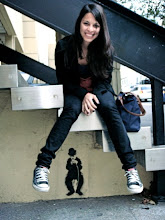
To be honest, I always try to avoid scary movies. That’s why, when I was around 16 years old and some friends decided to play 28 Days Later on TV, I was extremely relieved to be picked up by my parents earlier than expected so that I would not have to endure the entire film. Today, thinking about that experience, I realized that it is impressive for a British film with a humble budget and no stars, to have made it into the Venezuelan market where theaters are monopolized by American blockbusters. Thus, 28 Days Later seems to be Boyle’s ultimate realization. He was able to return to his comfort zone of working with a small crew, modest budget, and unknown actors, and yet develop a film that taped into global mainstream. It seems like The Beach “cured Boyle and Macdonald of any temptation to go Hollywood,” (71) and yet this film found its way into such market.
Boyle’s talent is definitely stimulated and brought to the surface by pressure and the need of creative problem solving. In fact, he admits “I love leaving things as late as possible. It’s very exciting” (80). This is why there is a direct correlation between his most brilliant films and very small budgets. The interesting part is that his solutions to such monetary restrains greatly enhance the story lines and aesthetic elements of his films. In the case of 28 Days Later, Boyle decided to use digital cameras which were cheaper than celluloid cameras but somewhat new and unfamiliar. Nevertheless, their technology created images that were unlike what audiences were accustomed to, thus intensifying the strange atmosphere of the infected city. The images were crisp and the movement of the infected was fidgety and disjointed, “sort of like staccato” (76). In addition, in order to operate these cameras, a reduced number of people were needed, which allowed Boyle’s crew to shoot the outdoors scenes through multiple cameras at the time. Boyle’s work tends to be great when shooting indoors, however, it seems to loose such spark when faced with exteriors. Nevertheless, in 28 Days Later these shots, which were extremely important to set the tone and establish the story, were brilliant. As Jim wonders in complete shock through the deserted streets of London, we are drastically pulled into the story questioning our reactions in his position.
Another benefit Boyle extracted from his budgetary limitations was the use of inexpensive-unknown actors. After having made The Beach, a film that revolved around only one factor, Leonardo DiCaprio, Boyle went the complete opposite way with 28 Days Later. However, the drivers of such decision were not only monetary. There was an element of egotism that must have played a big role in making this decision. He had stated in an interview, previous to the release of The Beach, that “a mass audience always goes to a cinema for actors, not directors” (59). Therefore, 28 Days Later seemed to be Boyle’s retaliation project, a way of proving that directors’ films can be successful. Nevertheless, the fact that Jim, Selena, Hanna, and Frank were unknown to the audiences, made it possible to create a deep connection and identification between them.
Apart from the innovative camera techniques, editing, and experimentation used by Boyle in 28 Days Later, what took this film to the next level were the different layers of commentary and criticism. For example, there is a striking condemnation of traditional systems. It is not a coincidence that the humans, who were supposed to represent hope and salvation, were part of the military, one of the oldest organizations still standing in modern days. To accentuate such clash between old and new systems, ancient statues saturate the house in which the soldiers retrieved. Here, we are presented with a new kind of social intolerance which is very close to audiences’ reality and thus, it forces them to “speculate where it’s come from” (72).

No comments:
Post a Comment